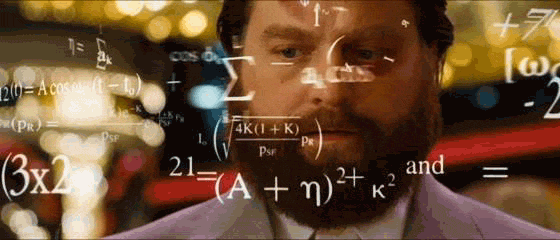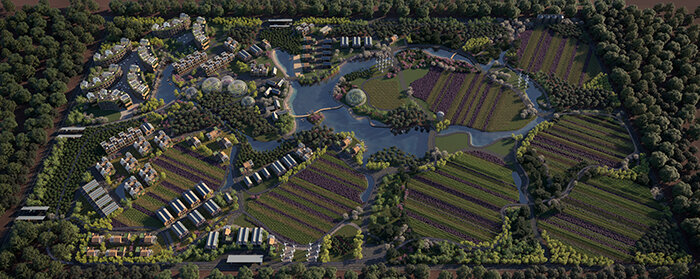WHAT COVID-19 CAN TEACH US ABOUT SUSTAINABLE CITIES
It’s 2020 and we can’t leave our homes. COVID-19 is here to stay, life has come to a screeching halt and social distancing is officially IN (I’ve already played 22 games of Catan on my iPhone… nice). The grocery stores are less stocked than usual, but I am fortunate enough to have food on my table. No one seems to be buying the vegan and vegetarian options… their loss. Guess I’ll be the last one to starve.
Photo by @_amyarhcer
But as I’m walking through these panic-stricken aisles in the suburbs north of NYC, I can’t help but reflect on the city itself and its ability to handle a pandemic, specifically through the lens of our food system and city planning. There is no indication (as of now) that we will lose our access to food, but how long will this last? How long will it be before the virus affects food production and transportation in areas like California where most of our food is grown and harvested by migrant workers with limited access to healthcare? What if we were dealing with a food-related virus? Are we city-dwellers prepared to handle the NEXT pandemic?
Putting it bluntly… not even close.
COVID-19 has already impacted our food delivery services that so many New Yorkers rely on and the que for the local grocery store stretches down the block. Even when they arrive at the store, the shelves are mostly empty and they move on with their day ASSUMING it will be fully stocked tomorrow.
I’m not saying we should panic and buy as much food as we can (we’re all in this together - thanks Troy Bolton) but it is however, important to remember that so many New Yorkers are already food insecure. With increased global uncertainty, many of us will experience food insecurity for the first time. It’s not a pleasant feeling.
All of this being said, can we sift through the pandemonium to find the silver lining? Can we use this experience to design a better city that can self-sustain in the event of a disaster and could this utopian, food-independent city become a model of everyday life?
My guess is no, but let’s play a game of hypotheticals, shoddy math, and urban agriculture… mmmm my favorite.
Let’s say we wanted to turn the five boroughs of NYC (Manhattan, Queens, Brooklyn, Bronx, and Staten Island) into a food-producing oasis and every available green space and rooftop would be dedicated to food production. Sounds nice but let’s dig into the numbers.
NYC is composed of 205,000 acres and has a population of 8.6M. Of those acres, 36,731 are rooftops (1.6B sq ft) and 28,000 acres are greenspace. That would amount to 64,731 acres to produce food. However, because I want to keep this hypothetical conservative, let’s assume that ¼ of those acres are unusable due to building regulations, pollution and other factors.
That leaves us with 48,548 acres to use for food production. Sounds like a lot, but remember we have to feed 8.6M people.
And because I am the master of the universe in this hypothetical, let’s make everyone a vegan. Why vegan? Because the number of acres needed to feed a vegan for a year is ⅙ of an acre compared to the 3 acres needed to feed one person on the standard American diet that includes animal consumption.
Taking it another step further, let’s be positive and assume that this future pandemic only lasts six months instead of the full 12. So really it we would only need 1/12 of an acre to feed one vegan for six months.
But here’s where the math doesn’t work. We only have 48,548 acres to use and when you multiply that by 12, we get 582,576 people… out of 8.6M… 6.8% of NY’s population would be fed. Even if we had the full 64,731 acres, we still only feed 776,772 people or 9%.
Well this sucks =[
Not only would we need to convert everyone to veganism, we wouldn’t even come close to feeding our overpopulated city. This is a scary reality. Living in a crowded city like NYC, we are inherently dependent and reliant upon so many systems and resources outside of our control. Reliance and dependence create fragility in all things and the more we build without strengthening our foundations, the more precarious we make our living situations.
I’m not saying we should pack up all our things, hitch the caravan to our horse, and head west to tame the wild frontier in search of new land and opportunity. I personally don’t want to live in Kansas (no offense to Kansas) but I do want to find a way to design better cities. And what if we built them like a terrarium?
This may be taking biomimicry to an extreme, but I’ve recently become obsessed with terrariums because of their ability to self-sustain. Despite the tightly-packed, overcrowded nature of terrariums, they are incredibly efficient because they have built a closed-loop ecosystem. Yes they grow, but they grow slowly, and sometimes you need to control the population and prune to keep things functioning properly.
I’m not suggesting we would kick people out of the city they live in (to decrease the surplus population!) but what if we built cities that monitored population growth and built self-sustaining, food-producing infrastructure? A biophilic blend of controlled urbanization putting the environment and food first. I’d really want to avoid the 1984 dystopia outcome, but I’m intrigued by this concept of Terrarium City Planning, especially in the face of life-altering pandemics like COVID-19.
Other countries have already begun building communities with these values in mind. ReGen Villages in the Netherlands is constructing a “closed-loop” system of living that produces its own solar power, grows its own food, and collects water (seriously check them out, they are awesome). Their mission puts the climate first, and according to their website, their solution is a
“Desirable off-grid capable neighborhood comprised of power positive homes, renewable energy, water management, and waste-to-resource systems that are based upon on-going resiliency research… In the next 30-years the size of the aspiring class will double to 4 billion, creating enormous demand for integrated neighborhood designs that incorporate door-step agency with high-yield organic food production that feed diverse nutritional needs.”SIGN. ME. UP. To be fair, this isn’t really a city at all, and I wonder if the increased trend of urbanization will slow as people yearn for a more disconnected and sustainable life.
An outline of the different systems within a ReGen Village
An aerial view of the proposed design for ReGen
Let’s be clear. I am not a city planner. I don’t know nearly enough to be passing judgment or diving into the logistics of making this a reality. But I do know that we are vulnerable. The passing of the NYC Climate Mobilization Act last April is a step in the right direction to make our rooftops greener, but it may not be enough to make a significant difference.
Learning to grow my own good has been such a gift in my life, and I feel confident that in the event of the zombie apocalypse, I would be ok. The COVID-19 pandemic has shown us many things, but it has slowed life down enough to make us reflect on the role we play in this fragile ecosystem. Let us use this crisis as an opportunity and think deeper about our food system, cities and the environment.
Spend time with your loved ones, eat your veggies, hug your plants and wash your hands.
Farmer Nick is a Plant Coach & Urban Farmer living in LA & NYC.
To learn move visit https://www.farmernicknyc.com/writing/what-covid19-can-teach-us-about-sustainable-cities




